Last-Minute NYC Holiday Gift Guide 🎁
We’ve created a holiday gift guide with presents for the intrepid New Yorker that should arrive just in time—


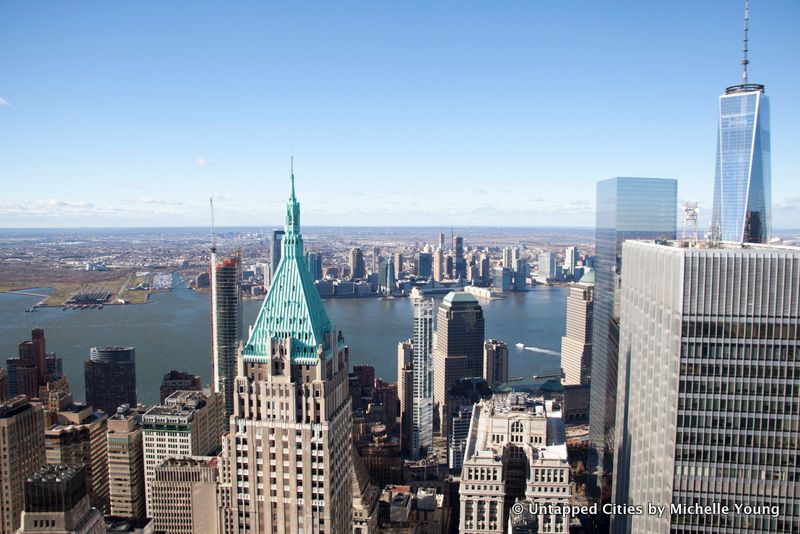
With anti-Trump protests erupting in America’s urban centers, here is a building in New York City that many do not know is owned by Donald Trump: 40 Wall Street. You know this building downtown, with the green pyramidal roof, but do you know its secrets?
At 927 feet, 40 Wall Street was intended to be the world’s tallest building upon completion in 1930 and had nearly one million square feet of office space. But the architect of 40 Wall Street, Craig Severance, was a bitter rival (and former best friend) to Chrysler Building architect, William Van Alen. Both were attempting to surpass the height of the Woolworth Building, then the world’s tallest, and both were making changes and adding height as the rivalry unfolded during the construction of both buildings.
40 Wall Street was initially to be 47 stories, then 63, then finally 71 stories. The building held the title for world’s tallest for only two months. Then, Van Alen pulled out his most show stopping move: a 197-foot spire that was under construction secretly inside the building. The Chrysler Building then overtook 40 Wall Street as the world’s tallest.
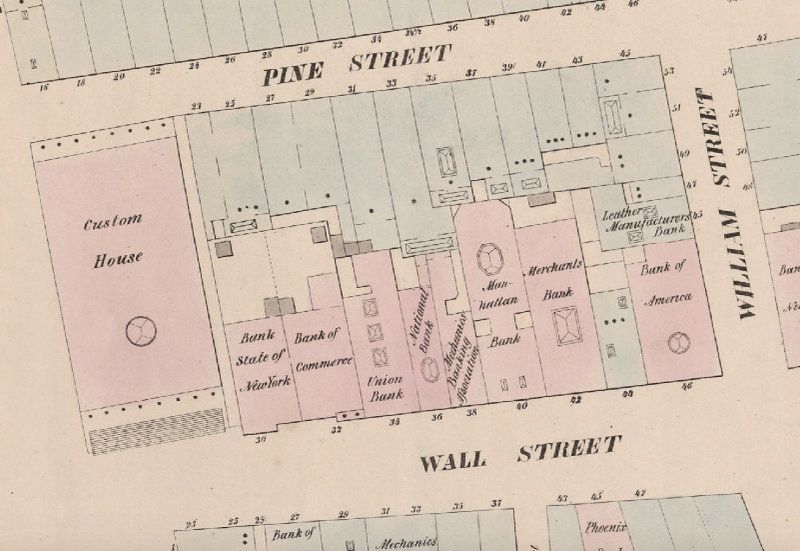
From the 1852-54 Maps of the City of New York by W. Perris via NYPL
40 Wall Street was originally known as the Manhattan Company Building or the Bank of Manhattan Trust Company (which later became Chase and then J.P. Morgan Chase). At the same site today stood the original Bank of Manhattan Trust Company building, constructed in 1799. The company plays a role in the famous rivalry between Alexander Hamilton and Aaron Burr.
The financial firm actually began as the first organized water delivery service, a private enterprise run by Burr which had exclusive rights to supply water to New York City. Burr used a large yellow fever epidemic to get the charter for the water service in order to break through the banking market in New York City, which was held as a monopoly by Hamilton’s Bank of New York. The charter for the Bank of Manhattan Trust allowed it to use its surplus capital for financial transactions.
The current site of 40 Wall Street was an agglomeration of multiple smaller lots, which you can see in New York City atlases prior to 1930. And funny enough, the pistols used in the Hamilton-Burr duel are located in the headquarters of J.P. Morgan Chase at 277 Park Avenue.
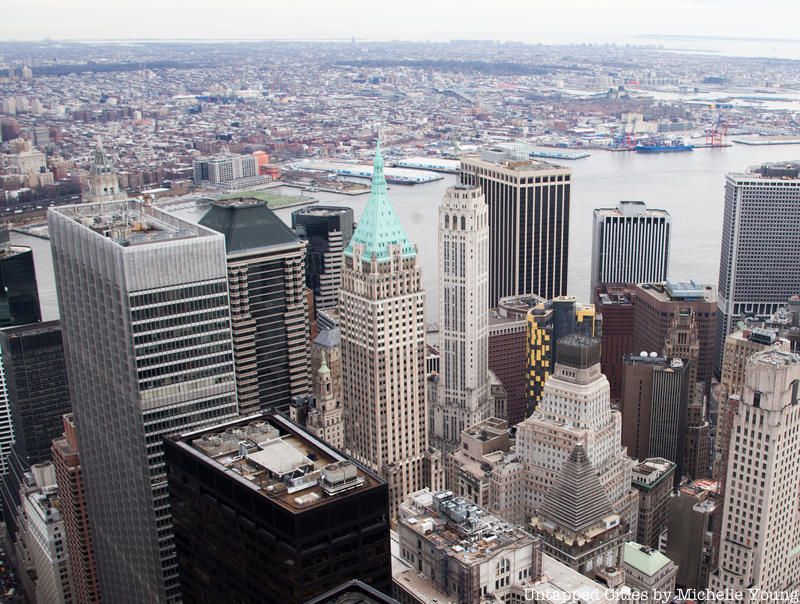
40 Wall Street is considered an engineering feat, constructed in just eleven months. The Landmarks Preservation Commission writes in the building’s designation report, that the engineering and construction were “extraordinarily complex.” There were many other skyscrapers under construction in the area at the same time and the site itself was crowded without space to store building materials. Unlike the Woolworth Building, whose foundations could be sunk using pneumatic caissons, existing structures underground prevented this method from being used at 40 Wall Street. The subsoil was problematic with bedrock at “64 feet below street level, with layers of boulders and quicksand above” writes the Commission. The site was demolished and foundation was laid at the same time, which was a rare process.
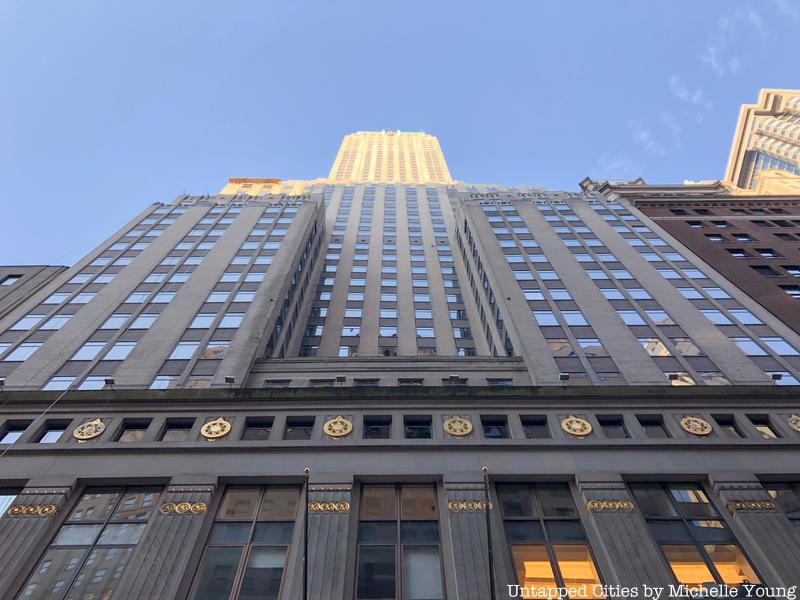
According to Neal Bascomb, author of Higher: A Historic Race to the Sky and the Making of a City in a podcast for 99percentinvisible, “…it’s doubtful you’ve even heard of the Manhattan Company Building. This is probably because now it’s called 40 Wall Street or the Trump Building, but also because the design just never took hold in the public consciousness. This was not the case when the buildings were first completed. The Chrysler Building was universally panned and the Manhattan Company Building got great reviews from architecture critics.
W. Parker Chase, author of New York: The Wonder City, wrote in 1932, “This marvelous example of architectural and building skill is not only a credit to New York, but to all America. No building ever constructed more thoroughly typifies the American spirit of hustle than does this extraordinary structure — built in less than one year. … Words are inadequate to convey even a faint conception of the splendor or the wonder of this magnificent building.”
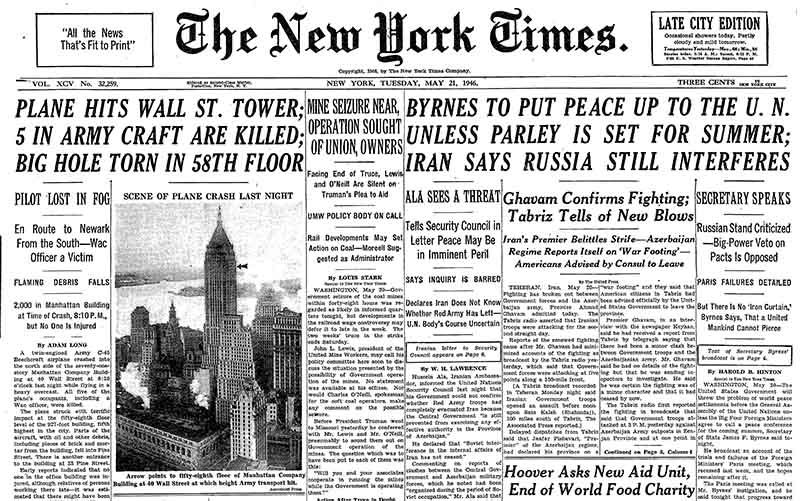
On the evening of May 20th, 1946, an army plane crashed into 40 Wall Street at the 58th floor. It was en route to Newark Airport from Lake Charles Army Air Field in Louisiana.All five passengers aboard the plane were killed. The cause of the accident – fog – was similar to the army plane crash into the Empire State Building, which took place only the year before.

Like many of New York City’s Art Deco skyscrapers, 40 Wall Street was built with a public observation deck in its roof, said to be on the 69th and 70th floors. The roof also contained machinery and recreational facilities. One claim to fame that did surpass the Chrysler Building was that the highest usable floor at 40 Wall Street was almost 400 feet above its rival, according to the consulting architects, Shreve & Lamb, and that it had the highest observation deck. There is a rumor that Governor Thomas E. Dewey lived below the observation deck for a period of time, even though the building was zoned only for commercial use.
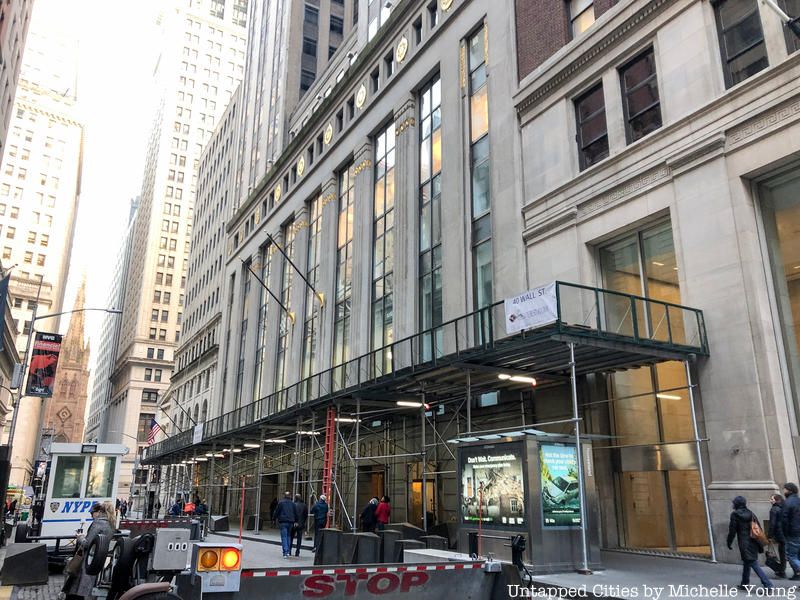
In 1982, 40 Wall Street was purchased by Joseph J. and Ralph E. Bernstein, who were discovered later to have been operating as a front behind dictatorial Philippines president Ferdinand E. Marcos. It was not the only building in Marcos’ portfolio of buildings in New York City: the Crown Building on 5th Avenue and the Herald Square shopping mall were among others likely using funds taken from the Philippine government treasury. Once Marcos was removed from leadership, his assets in the United States were frozen, which led to a contentious feud between the Bernstein brothers and the associate of an arms dealer, who both claimed ownership of the building.
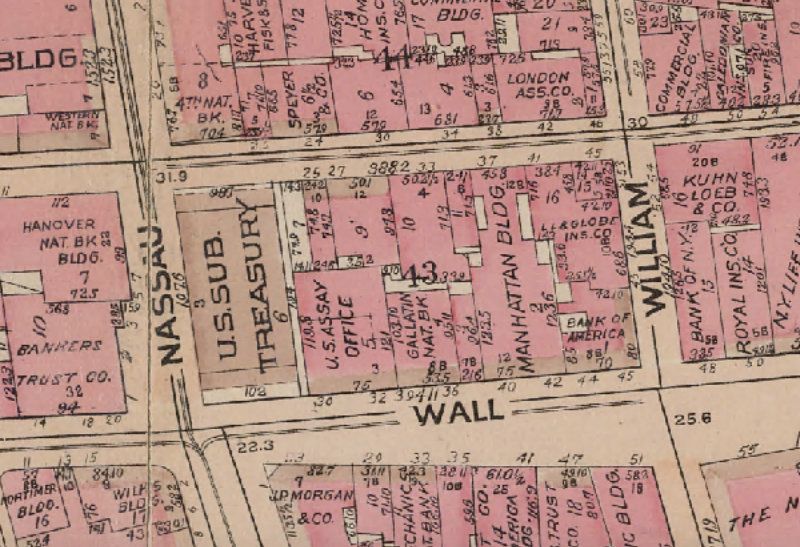
1923 Bromley Manhattan land book of the city of New York via NYPL.
According to Anthony C. Sutton in Wall Street and FDR: The true story of how Franklin D. Roosevelt colluded with Corporate America, the ban against Germany to construct airships after World War I opened possibility for United States companies to take the lead, using patents seized by the US government in 1917 under the “Trading with the Enemy Act.”
One of the firms interested in developing air transportation was S.R. Bertron, of Bertron, Griscom & Co, based in 40 Wall Street (the building before this version). Bertron sent President Franklin D. Roosevelt a letter in 1921 and the two met in New York City, leading to a contract later that year known as the Hardesty-Owen-Bertron agreement that “planned the road to development of commercial airship operations in the U.S.,” writes Sutton.
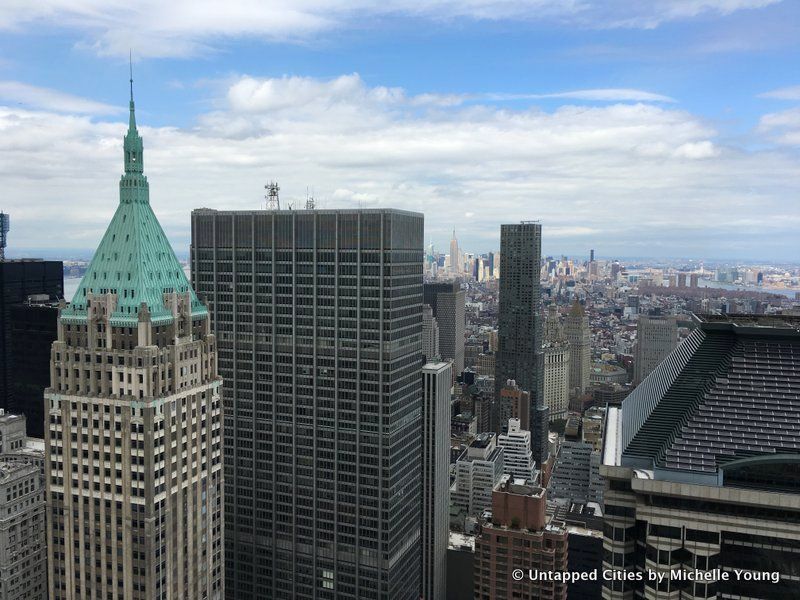
40 Wall Street, left, from the observation deck of 20 Exchange Place
Financial companies like Deutsche Bank, Manufactures Hanover’s Trust Company, Toronto Dominion Bank, Loeb, Rhodes & Co., Bache & Co., White, Weld & Company have all been headquartered at 40 Wall Street. The U.S. Navy had offices inside during World War II. Other companies include Western Union and Westinghouse Electric Corporation.
In 2016, Bloomberg News reported on the large number of “frauds, thieves, boiler rooms and penny-stock schemers” that have taken up residence in the building since it was bought by Trump, adding to the site’s fascinating history. It was also the headquarters of Trump University, and the lawsuit against the defunct education company will head to trial on November 28th.
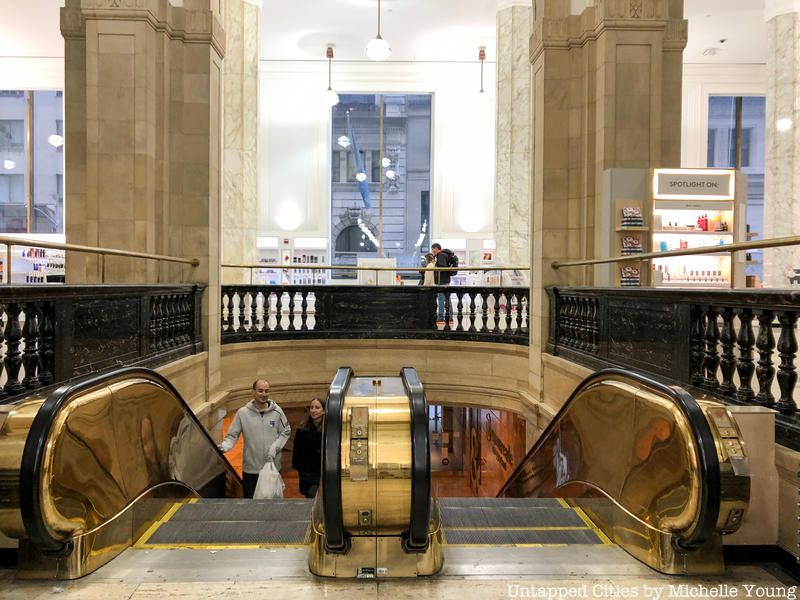
In 1995, Donald Trump purchased 40 Wall Street for a figure that is still debated. New York Times wrote at the time, it was less than $8 million. Trump wrote in his book, Never Give Up, and said on The Apprentice and CNBC he paid $1 million for it. “Even people who know very little about real estate can be duly impressed by that price,” he contends in his book, “I had been watching this building for decades, and I knew a lot about it before making my move.” The Federal Election Commission disclosure forms from 2015 show he has a debt of over $50 million on 40 Wall Street for the lease of the land.
Regardless, 40 Wall Street is considered his most successful real estate venture, transforming the declining skyscraper icon into a residential and office building. Trump representatives said at the time of the sale that $100 million would be spent in renovations following the purchase, and much of the surfaces have been gilded, but The Real Deal reported in 2012 that only $35 million was spent.
Next, check out the Top 10 Secrets of 70 Pine, an Art Deco Skycsraper just nearby.
Subscribe to our newsletter